Star Trek: Prodigy Season 2 one of the most scientifically-twisted storylines in recent memory — with multiple wormholes, travels to parallel universes, several rounds of time travel, temporal paradoxes, and more.
Guiding the series writers through this timey-wimey adventure is Star Trek franchise science advisor Dr. Erin Macdonald, who has spent the last several years helping out on different series behind the scenes — and is now on the upcoming Starfleet Academy series.
We had the opportunity to chat with “Doctor Erin” this week about her background, the challenges of balancing the science in science fiction, and more.
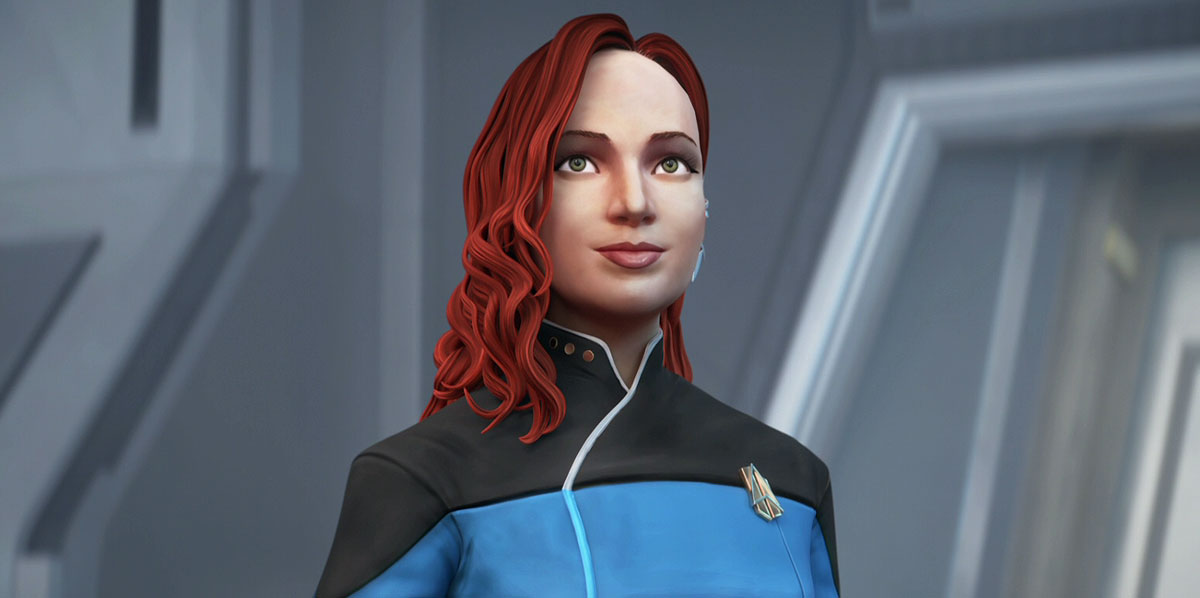
TREKCORE: Famously, we know you’re a PhD in astrophysics, but I was wondering a little bit about what your focus was — or any particular research topics you’re interested in within that broad field.
DR. ERIN MACDONALD: Yeah, it’s broad, for sure! I started out as an undergrad doing research at the University of Colorado, where I was doing my undergrad degree, and I studied radio astronomy. That was my first sort of passion which was exciting for me because originally what got the bug in me to be an astronomer was Contact and Jodie Foster’s character, Dr. Ellie Arroway. The first time I got to go to a radio telescope and hit the button and the whole thing moved, I was like, “I did it. I’m in Contact. I’m Dr. Arroway!”
I did that, and then I was looking for PhD positions, and I really wanted to live overseas. My family’s from Scotland; we’d been there a bunch when I was a kid and I wanted to go back. I didn’t have time to study abroad when I was an undergrad, and their PhD programs fit what I was looking for just in terms of time and depth and all of that.
And so I applied to a bunch of them, and I ended up speaking with a professor at the University of Glasgow who had come from radio astronomy, but was now working in gravitational waves.
I’m looking for more people with this background,” he told me. “It’s mostly people with a engineering, science, physics background who are building detectors. Now, we need people who kind of understand the astrophysics side of it and why neutron stars do what they do and all of that stuff.”
So I got pulled into gravitational waves. I was with the LIGO Collaboration and this was all before their Nobel Prize-winning detection. It was a very small community at that time. And 2014 is when I left academia…. and in 2016, they detected them and won the Nobel Prize, which is fine. (Laughs)
In @StarTrek, ships travel at warp speed, but did you know it might be possible to cross the galaxy in a fraction of the time? Find out how with astrophysicist @drerinmac! #StarTrekProdigy pic.twitter.com/eDK1GMUAuQ
— Star Trek on Paramount+ (@StarTrekOnPPlus) January 4, 2023
TREKCORE: I can see how that translates to the type of science used throughout Star Trek. So how did you land a job as the franchise’s official science advisor?
MACDONALD: I didn’t discover Star Trek until I was in college as an undergraduate. I didn’t grow up in a sci-fi household — I watched The X-Files in secret –but I like to joke that the Venn diagram of physics majors and Star Trek fans is almost a perfect circle.
I was very much exposed to Star Trek in my undergraduate and fell in love. I mean, it’s absolutely my alley. When I was living in Scotland, and I fell in love with Voyager — I just watched Voyager all the time because of Kathryn Janeway. I just loved her, and felt like she was a mentor to me. She was the type of woman I wanted to be.
Because I didn’t have a career plan — I just wanted to do a PhD, and I didn’t know what I was gonna do after that — I wanted to give up a lot. And every time I would, I would watch Voyager and I would be like, “Oh, Janeway would be so disappointed in me if I quit. I have to keep going!”
But I was also procrastinating a lot by watching Voyager, watching science-heavy episodes and trying to figure out how warp drive worked — really dissecting the science in the show. When I eventually got into aerospace engineering, I missed teaching so much that I would go to conventions and just give talks on the physics behind warp drive, that sort of thing… and that’s where those things began to intersect.
TREKCORE: So you have your head-canon ideas about how all the Star Trek science works, and now you get to actually invent those and put them into the show!
MACDONALD: Exactly!
TREKCORE: Prodigy Season 2 must have been very challenging because of how deep it goes into theoretical physics — and then spreads it out over multiple episodes versus, like, a science of the week. What was the process there?
MACDONALD: Thankfully, for Season 2 of Prodigy, I was involved pretty much right away — so as they were coming up with ideas like Chakotay’s struggle to power up the ship in “Last Flight of the Protostar.” I’m proud that we really drove home that dilithium is not the fuel for a starship — that you need matter and anti-matter, that’s how it works. I’m like, “Yes! We got that across.”
But really, all the time travel was a huge challenge, like that scene at the end of “Ouroboros, Part 2” when Wesley and Rok-Tahk and Zero are all trying to figure out the timeline. Like — that was us. We were sitting there and I just felt, “I feel like this can close… we don’t need to have sort of these branching wormholes that are just kind of like abandoned or snipped off. This can be one whole path for the Protostar to go through.”
So that’s how we ended up doing it — and the little touch that I just love so much is the badge that Dal leaves on the bridge to close the loop back to the series premiere. It’s just so good. As a sci-fi time-travel fan, I love that you can go back to watch the pilot and know how much more it means. I get chills thinking about it!
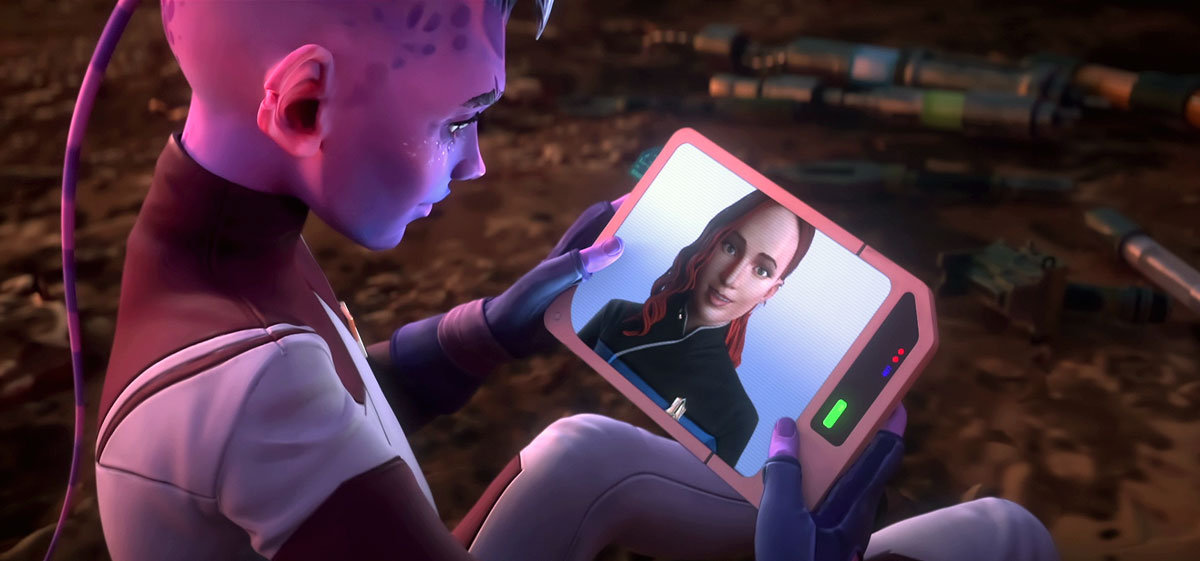
TREKCORE: I have three kids, and they love Prodigy, and they were very excited to hear that I was talking to their Temporal Mechanics 101 professor! So this one’s from the kids: How do you know about so many different kinds of science — and how do you research outside your comfort zone?
MACDONALD: Well, one of the things you learn when you become a scientist is how to ask the right questions and interpret results — and how to know what is trustworthy.
If I get presented with a problem that I don’t know the answer to — which can happen, since I don’t have a background in biology or medicine — I either will call an expert, or I will try to find what information I can. Because I have scientific training, I have enough background knowledge that I can kind of filter through to the right answer, and then interpret that in a way that will make sense to everyone else.
The best training that I got in doing that was working at a science museum — that’s the best training you can get to be a science communicator. You’ll talk to all sorts of people there, from a five-year-old who just learned about black holes to a retired aerospace engineer who wants to hear about the Mars program… and you do that for hours a day, every day.
I learned a lot, and I got comfortable saying, “I don’t know.” That’s a huge hurdle to get over, especially if people are coming to you as an expert, to say “That’s a good question. I actually don’t know the answer. Let me look it up.”
TREKCORE: After that humble start, What does it mean to you, now that you have a wider reach as a science communicator and ambassador?
MACDONALD: It’s really wonderful — and I feel like it’s important for people to see that I am a multifaceted human. I have a lot of tattoos, I love heavy metal music, I play video games… but I’m also a scientist. I think the more representation we can get out in front of people where they can say like, “Oh, that’s cool. I can like all these things, and I can be a scientist, too!”
So many times, we feel like it’s a very monolithic identity that people are assigned as scientists. The best compliment I’ve ever been paid was when someone called me the “Julia Child of science,” and I was like “That’s what I wanna be!”
I want to be someone who is comfortable in their authentic self and their identity — because being a genuine, enthusiastic person can make people excited and also make hard things accessible. That’s what I love doing.
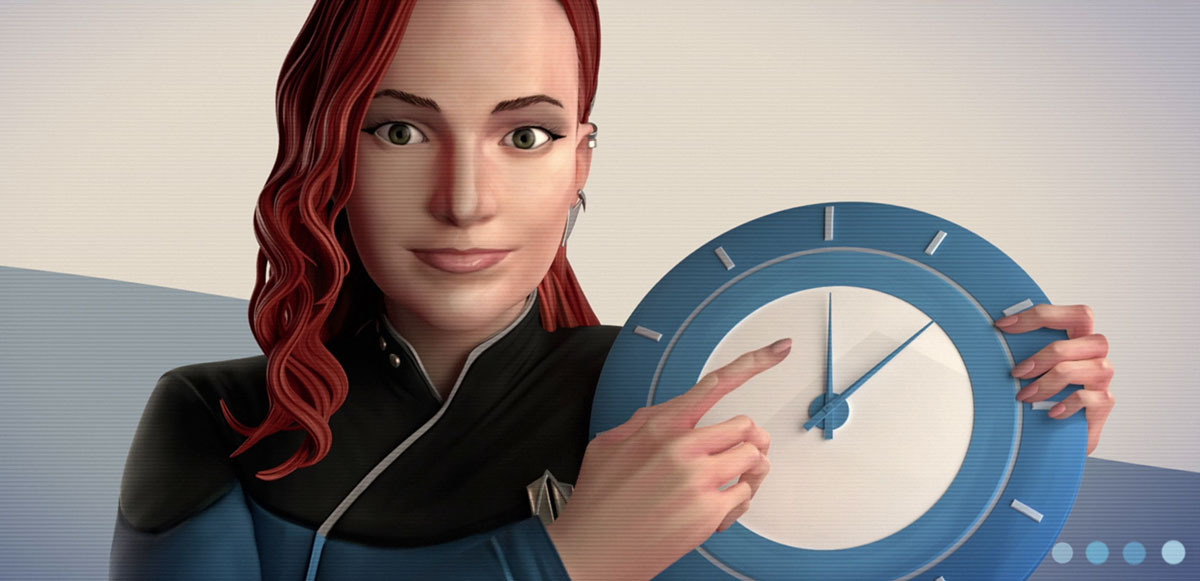
TREKCORE: So I don’t often get a chance to pick the brain of an astrophysicist — so let me ask you some science questions! Do you think time travel is possible?
MACDONALD: So I think time travel in terms of like, “Press a button and go anywhere!” is not possible. My training is on mathematical explanations of space-time — we have little coefficients in front of space, which means I can move within space as much as I want, in whatever direction.
Time, though, that’s a fixed constant — and there’s nothing we can do to manipulate that. Our current understanding doesn’t allow us to mess around with the time dimension… but there are ways that we can change it a little bit.
There’s the idea of time dilatation — that you can travel close to the speed of light, and experience time at a different rate, or gravitational time dilation, which I think people are most familiar with. There’s a great Voyager episode called “Blink of an Eye” about that, but more commonly people probably know Interstellar, right?
When you’re on the surface of a planet in a deep gravity well, you experience time differently than people outside that gravity well — and that is true. We experience time slower on the surface than GPS satellites, and they actually need to account for that time difference if you want to know exactly where you are.
That’s a practical application, but that’s us just experiencing time slower. We’re still not controlling it.
TREKCORE: What about multiple universes?
MACDONALD: I do believe in multiverses. My favorite multiverse theory is something called the dripping black hole theory, which is where you get a black hole in our universe, which then merge, then grow, then migrate to the center of galaxies — and that’s where we have supermassive black holes. All of this matter is falling into it, and it’s converting it into energy. It’s tearing it apart.
We don’t know what really happens in there, but the dripping black hole theory is that it reaches a critical mass or critical amount of energy, and it explodes, and it gives birth to it. That’s the Big Bang in another universe. And so now that expands, all of that energy starts condensing into matter, and then it continues expanding because of all of the material that’s continuing to fall into the parent black hole. And so it’s like this dripping black hole image like it’s black holes all the way down. That’s my favorite multiverse theory.
TREKCORE: So we probably couldn’t travel in between universes.
MACDONALD: Not yet. Not unless we could figure out how to get inside a black hole and not die! (Laughs)
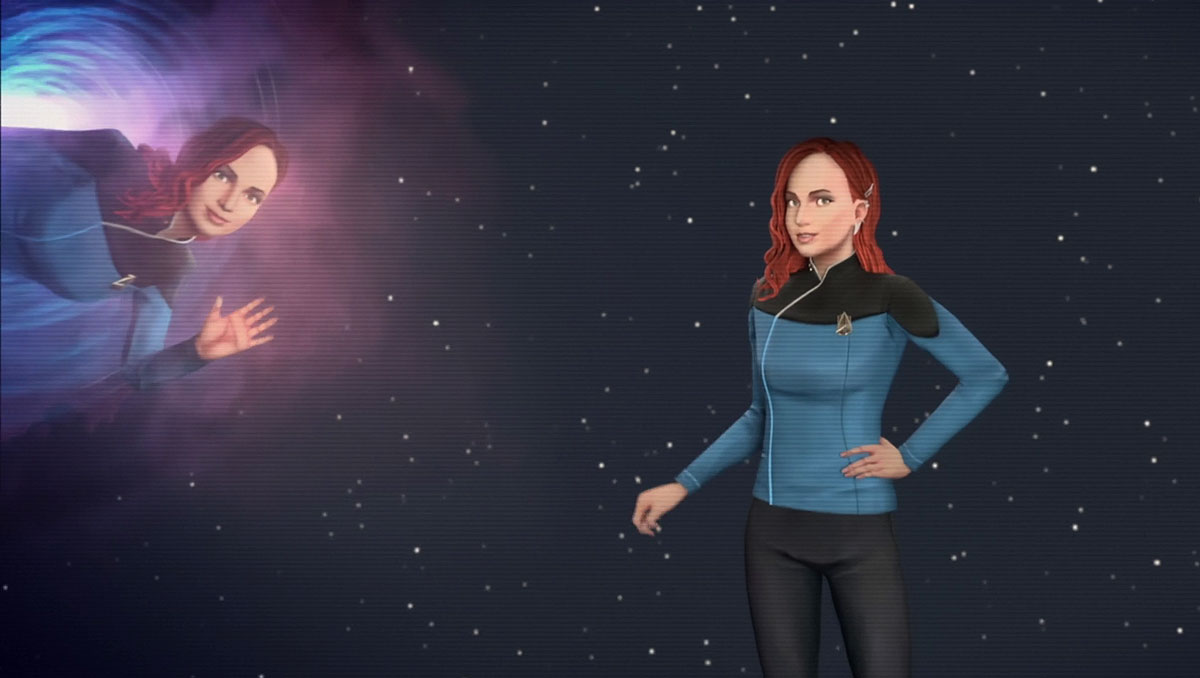
TREKCORE: I’m assuming that your theories and views on that have changed since you first started watching Voyager, where I think they did an excellent job of being kind of “of the moment” with all these ideas. Do you have a favorite example of a cutting-edge idea that you’ve proposed for the modern Trek shows?
MACDONALD: We did some really fun stuff in Discovery, especially with the DMA and the idea of dark matter, gravitational waves, and all of that stuff — this sort of roaming black hole. Those were all sort of really interesting things. I also loved the challenge of the musical episode of Strange New Worlds.
It’s so funny because we have, you know as a Star Trek fan, there’s a lot of random, goofy episodes, and when I get presented with anything like that, I’m like… just don’t explain it. It’s fine.
But when Strange New Worlds wanted to do a musical, they insisted: “This is Star Trek, there’s going to be a scientific explanation for the musical.” So that’s how we ended up with the explanation about knitting multiverses together. It was a fun challenge, for sure.
Then, weirdly — and I haven’t really talked about this yet — there’s an episode of Prodigy where they land on a planet and Rok-Tahk goes, “Oh, it’s sulfur and hydrogen sulfide.” We were writing that when the Hyperion plant here in LA had an accident, and it smelled awful because of the hydrogen sulfide in the atmosphere.
So we knew exactly what chemicals they’d be smelling! (Laughs)
TREKCORE: What’s the most outlandish thing the writers have tried to slip past you? Have there been any times when you were just like, “Uh, no.”
MACDONALD: I will say that the most outlandish thing — they didn’t try to slip past me, but they definitely were like, “We’re sorry!” — was just the concept of the protostar drive in Prodigy, having the star contained within the ship.
I didn’t join the show until they already had their ideas planned out for Season 1, and they had the idea of the protostar engine very early on. We came up with a good explanation — that it’s this super dense, really hot material that doesn’t give off much energy — and then we used these gravitational compressors to condense it even further.
That causes it to start fusing — which happens inside a star — and that gives off the energy needed to build a wormhole for the warp bubble to go through. Then in Season 2, they said, “Oh, we’re actually going to build a protostar.”
TREKCORE: Like, come on, guys! (Laughs)
MACDONALD: It was exotic matter! (Laughs) Let’s do it. Sometimes it’s just easier to throw those words in there and just let it be.
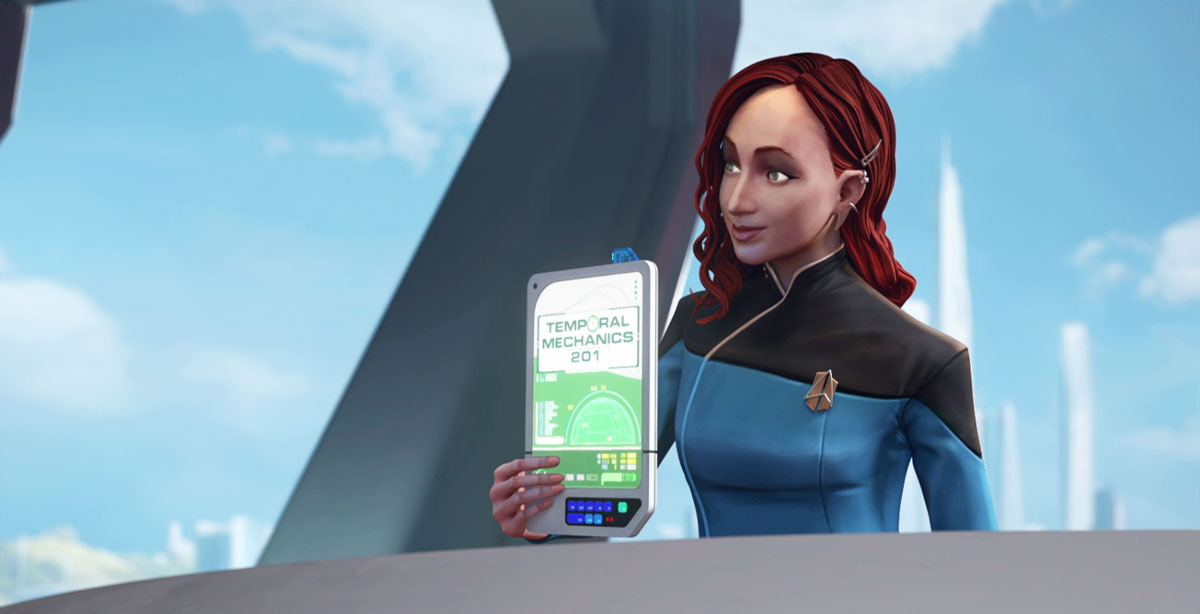
TREKCORE: And then with the ‘pretend’ science, how do you contribute to that? Like, when to call back to something like Worf’s universe hopping in “Parallels,” or the interspatial flexure from “Counterpoint”?
MACDONALD: I’m so glad you mentioned the interspatial flexure! “Counterpoint” is my favorite episode of all Star Trek. It’s my favorite one — and that scene is one of my favorite scenes in my favorite episode of all Trek.
TREKCORE: It’s one of Janeway’s best episodes.
MACDONALD: I have been wanting to work interspatial flexure into Star Trek as much as possible, and we did it twice in Prodigy — once in the finale, and one in my Temporal Mechanics 101 explainer video — and it makes me so happy. But, I mean, that is part of my job, too; to be the keeper of the Star Trek science and to really understand it.
Thankfully, I’m a fan, and I don’t have to go through 800 episodes every time we have a question about things. There are a lot of times I can just call up two or three episodes to watch to cover a certain topic.
TREKCORE: Right, yeah. We can find something to justify this.
MACDONALD: That went back to my first job, which was for the Burn in Discovery Season 3. I had to go back to research dilithium, and was like, “Okay, how have we talked about dilithium in the past? What can we do different here?”
TREKCORE: So we know future you teaches Temporal Mechanics 101 and Temporal Mechanics 201 — but what would be your dream class at Starfleet Academy?
MACDONALD: Definitely Warp Mechanics or Warp Theory, either as a student or teacher. But I really want to know all the details that humanity has figured out through the Cochrane era up until the ‘now’ of current Star Trek.
Since I was in graduate school, I’ve loved Starfleet Academy. That’s really all I wanted to do — but that wasn’t a job option, I bought a license plate frame for my car that said “Starfleet Academy Faculty member,” and still have it on my car today.
And now it’s legitimate!
This interview has been edited for length and clarity.
![]()
Star Trek: Prodigy Season 2 is available to stream now on Netflix globally (excluding-Canada, Nordics, CEE, Netherlands, Spain, Portugal, Poland, Russia, Belarus, and Mainland China). The show can also be viewed on SkyShowtime in the Nordics, the Netherlands, Portugal, Spain and Central and Eastern Europe.
